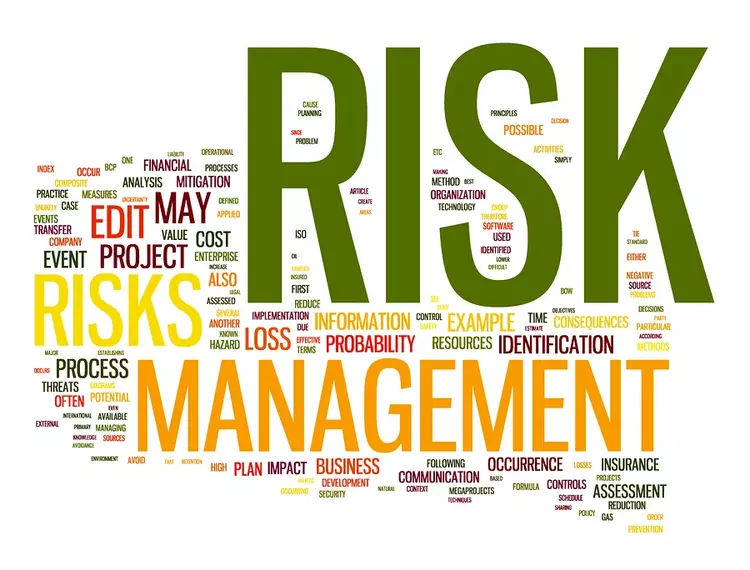Identifying threats is one of the first tasks you must take when conducting a risk assessment. You can then evaluate the hazards after this. But how do hazards and risks differ from one another?
Since the terms, risks and hazards are frequently used interchangeably, you are not alone in wondering what the distinction is.
The two terms are synonymous. There is no risk if there is no hazard. But they differ, and comprehending those variations is crucial to risk analysis. Let’s examine the distinctions between hazards and risks and their relationships.

What is a Hazard?
Anything that has the potential to be harmful is a hazard. A risk can result in loss, harm, death, or other adverse outcomes.
There are risks in almost every workplace, family, and setting. A material, piece of equipment, activity, working approach, or process could all be hazards. We are legally required to identify dangers at work when performing risk assessments.
Let’s first define a risk before we examine the risk connected to this hazard. A forklift truck, for instance, could be a risk. Both individuals who use it and those who work close to it could be harmed by it.
What is a Risk?
A risk is a possibility that the hazard will cause harm to someone. A risk evaluates the likelihood and severity of a potential injury.
The risk is evaluated based on the possibility of harm occurring and the severity of the injury. When these two criteria are taken into consideration, a risk may be large or low.
The likelihood and severity are calculated to determine the risk level. When looking at how a risk assessment was conducted, you will frequently encounter a risk matrix, such as this:
The degree of harm could be anything from minor, short-term damage to serious, permanently disabling injuries or death. The risk of harm from the danger can be anywhere between very rare to quite likely.
Implementing Risk Control
Generally speaking, there are six risk-controlling actions you can take:
- Eliminate
- Substitute
- Isolate
- Engineering controls
- Administrative controls
- Personal protective equipment (PPE)
Elimination
The eradication of a hazard is not always possible, even though it will always be the best course of action. The risk of someone being exposed to a hazard is automatically eliminated if hazards can be removed entirely. An illustration of this would be the risk of lead poisoning that existed in the past for people working at gas stations and other occupations that required frequent contact with petroleum. Two initiatives—the self-service gas pump and the removal of lead from petroleum—have eliminated that risk.
Substitution of the Hazard with Lesser Risk
While replacing the risk may not eliminate all of the dangers connected to a given process or activity and may even introduce new risks, doing so should nevertheless lessen the overall risk of injury or adverse health impacts. For instance, painting a house’s gable end would need you to work at the top of a ladder while someone else supported the ladder below you. Scaffolding might be used in place of a ladder. While the sturdier platform wouldn’t remove the risk of falling, it would make working conditions much safer.
Isolation of the Hazard
When isolating a hazard, this can be done by limiting access to plant and/or equipment, or in the case of poisonous or explosive materials, by putting them away in a safe container and doing so under stringent supervision. While installing noisy equipment in an inaccessible enclosure or room isolates the hazard from people, a fume cabinet can isolate the risk from people nearby if you’re utilising specific chemicals (s). The appropriate and secure storing of fireworks during a display is a prime illustration of this.
Engineering Controls
The term ‘engineering’ here can be slightly misleading as we are not discussing mechanical or electrical engineering. What is meant by the use of the word ‘engineering’ is as an alternative to the words’ devising’, ‘designing’ or ‘redesigning’ a process to place a barrier between the person(s) and a hazard or removing the hazard entirely from the person’s vicinity, such as machinery guarding, proximity guarding, extraction systems or removing the operator to a remote location away from the hazard.
Administrative Controls
When discussing administrative controls, we refer to how things are carried out and how individuals collaborate to finish a task. To reduce any risk of injury and/or adverse health impacts, administrative controls include implementing standard operating procedures, safe work practices, and/or providing adequate and sufficient training, teaching, or information (s).
Personal Protective Equipment
Gloves, glasses, earmuffs, aprons, safety shoes, and dust masks are a few examples of personal protection equipment (PPE), all intended to reduce exposure to specific risks. PPE is typically employed in conjunction with one or more of the other control measures discussed above and is typically considered the last line of defence. It is well known that single-use dust masks cannot consistently produce and maintain an effective seal around the nose and mouth, which can cause a harmful false sense of security and, as a result, an increased risk. This is an example of the ineffectiveness of this control strategy. When this is the case, a dust extraction system with fitting air respirators may be preferred, especially if utilising chemicals containing isocyanate poses a risk of severe health impacts even at extremely low exposure levels.
Difference Between Hazard and Risk
A risk can take many forms because danger may be harmful in various ways. For our example of a hazard, we employed a forklift. The operation of a forklift truck has the potential to cause harm in several ways, including:
- Contact with pedestrians
- Overturning
- Contact with other vehicles or machines
- Dropping the load
- Unauthorised use
By putting management practises in place, the risk can be reduced. Keep in mind that likelihood and severity determine the danger. To ensure that even if an employee was exposed, the amount would be so little that the consequences would be minimal, the severity may be decreased, for instance, by only permitting a very small amount of the material to be obtained. By establishing ventilation and exclusion zones, mandating the use of personal respiratory equipment, and enforcing these measures, the chance of dangerous exposure could also be decreased.
To ensure that something with the potential to cause harm (the hazard) cannot actually cause harm or that the harm is minimised, a combination of control measures can drastically lower the risk level (the risk). A work may frequently be labelled as high risk when it is actually high hazard. A task or activity need not be high risk just because it entails risks. Hazardous work can be made safe if each risk is managed so that the activity may be completed without incident. The risk is still present, but it is under control.
At Hurak, we specialise in offering online courses that cover a wide range of workplace health and safety topics. Feel free to contact us if you have any questions or want more information on any of these.



